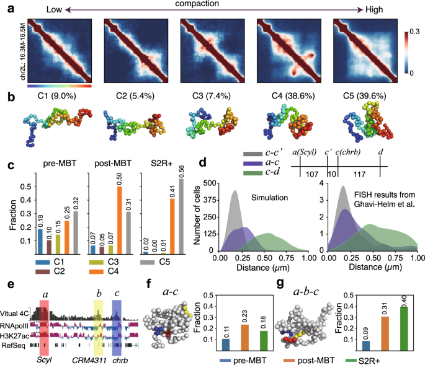Recent new technologies have been developed in systems biomedicine which include spatial genomics and cancer research, instrument development and application to diseases, and cancer precision diagnosis using nucleic acid technologies. Single-cell chromatin studies provide insights into how chromatin structure relates to functions of individual cells. A computational method has been developed for the reconstruction of large 3D ensembles of single-cell chromatin conformations from population Hi-C that are applied to study embryogenesis in Drosophila. High-res Hi-C in the fly revealed ~10x more TADs than previously known, including within regions earlier thought to be unstructured. In addition, super resolution microscopy reveals unexpected sub-structure of genome in the nucleus with < 20nm resolution. Multiple instruments, which include Cryo-AFM, multiplex magnetic tweezers have been developed for cancer diagnosis and systems-wide biomolecular interactions. The basic idea of multiplex magnetic tweezers includes the following steps: 1) magnetic beads interact with cells/single molecules; 2) apply uniform vertical force on 100s of beads at once; 3) measure the vertical distance of the beads to determine the cell elastic or biomolecular interaction strengths. The method was successfully used for distinguishing differences in different HCT116 colon cancer cell states. Other nucleic acid based technologies have also been developed for cancer precision diagnosis via nucleic acid probes and DNA frame structures.

Chromatin heterogeneity, compaction, and dynamic changes of a 3-body interaction unit
Selected Publications:
1. Sun Q, Perez-Rathke A, Czajkowsky D, et al. High-resolution single-cell 3D-models of chromatin ensembles during Drosophila embryogenesis. Nature Communications, 2021, 12: 205.
2. Wang Q, Sun Q, Czajkowsky D, et al. Sub-kb Hi-C in D. melanogaster reveals conserved characteristics of TADs between insect and mammalian cells. Nature Communications, 2018, 9: 188.
3. Li G, Huang S, Yang S, et al. abLIM1 constructs non-erythroid cortical actin networks to prevent mechanical tension-induced blebbing. Cell Discovery, 2018, 4: 42.
4. Wang W, Zhang N, Du Y, et al. Three-dimensional quantitative imaging of native microbiota distribution in the gut. Angewandte Chemie International Edition, 2021, 60(6): 3055-3061.
5. Fang K, Chen X, Li X, et al. Super-resolution imaging of individual human subchromosomal regions in situ reveals nanoscopic building blocks of higher-order structure. ACS Nano, 2018, 12: 4909?4918.